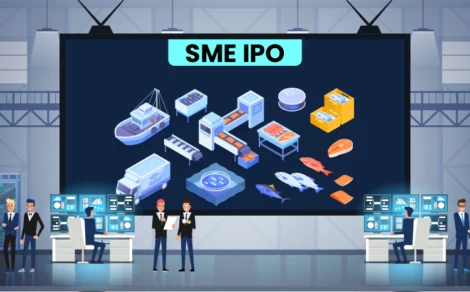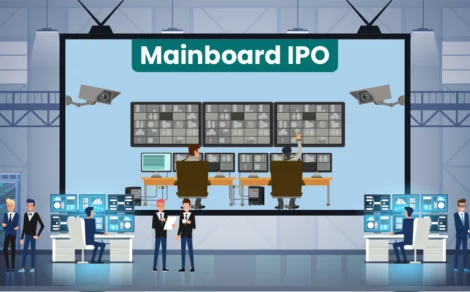ETF (Exchange-Traded Fund) is an investment fund that trades on exchanges, tracking assets like indexes or commodities, while FOF (Fund of Funds) invests in other mutual funds or ETFs.
Investing has become a popular way to build wealth, and with the growing number of financial products available, it is essential to understand the options before making a decision. Two commonly discussed investment vehicles are ETFs (Exchange-Traded Funds) and FOFs (Funds of Funds). However, there is often confusion among investors about which one is better.
In this blog, we will explain the difference between ETF vs FOF, how they work, and which one might be a better fit for your financial goals.
What Does ETF Mean?
An Exchange-Traded Fund (ETF) is a marketable security that tracks an index, commodity, bond, or basket of assets. It trades on the stock exchange, similar to individual stocks, and its value fluctuates throughout the day based on market conditions.
Key Features of ETFs:
- Liquidity and Market Access: ETFs can be bought and sold on the stock exchange during market hours, offering greater liquidity and flexibility.
- Diversification: They provide exposure to a variety of securities within a single fund, reducing the risk associated with individual stocks.
- Low Expense Ratio: Since most ETFs are passively managed, they typically have lower fees compared to actively managed mutual funds.
- Tax Efficiency: ETFs are usually more tax-efficient than mutual funds due to the unique creation and redemption process, which reduces capital gains taxes.
What Does FOF Mean?
A Fund of Funds (FOF) is a mutual fund scheme that invests in other mutual funds instead of directly investing in stocks or bonds. It offers diversification across multiple asset classes, fund houses, and investment strategies.
Key Features of FOFs:
- Multi-Fund Investment: FOFs pool investments into several mutual fund schemes, providing broad market exposure.
- NAV-Based Trading: Unlike ETFs, FOFs are not traded on stock exchanges. They are bought and redeemed at the Net Asset Value (NAV), which is determined at the end of the trading day.
- Higher Expense Ratio: FOFs have higher costs since they include both the management fee of the FOF itself and the fees of the underlying mutual funds.
- Tax Treatment: FOFs are taxed as debt funds, regardless of whether they invest in equity or debt-based mutual funds.
What is Inverse ETF, and How Does It Work?
An Inverse ETF is a type of exchange-traded fund that aims to profit from the decline of a market index or specific asset class. It uses derivatives such as futures contracts to produce returns opposite to the direction of the underlying benchmark.
Key Features of Inverse ETFs:
- Short-Term Investment: These funds are typically used for short-term trading or hedging against market downturns.
- Higher Risk: Due to their reliance on derivatives, inverse ETFs are riskier and may not perform as expected over the long term.
- Not Ideal for Long-Term Investors: Inverse ETFs are designed for short-term market movements, making them unsuitable for long-term investment strategies.
How are ETFs and FOFs Different from Each Other?
Here are the main factors that differentiate ETFs and FOFs:
| Feature | ETF (Exchange-Traded Fund) | FOF (Fund of Funds) |
| Nature of Investment | Portfolio of stocks, bonds, or commodities | Basket of mutual fund schemes |
| Trading | Traded on stock exchanges throughout the day | Bought/redeemed at NAV after trading hours |
| Liquidity | Highly liquid due to exchange trading | Lower liquidity, as they are not exchange-traded |
| Expense Ratio | Lower expense ratio (usually under 0.5%) | Higher expense ratio due to multi-fund management |
| Taxation | Taxed based on the underlying asset class | Taxed like debt funds, irrespective of the underlying mutual fund |
| Management Style | Passively managed, tracks market index | Actively managed, involves fund manager decisions |
Different Types of ETFs and FOFs
Both ETFs and FOFs come in various types, catering to different investment needs and risk profiles.
Types of ETFs:
- Equity ETFs: Track equity market indices like Nifty 50 or Sensex.
- Debt ETFs: Invest in government or corporate bonds, offering fixed-income exposure.
- Gold ETFs: Track the price of physical gold, allowing you to invest in the commodity without holding it physically.
- International ETFs: Provide exposure to global markets, making them ideal for diversification.
- Sectoral ETFs: Focus on specific sectors, such as technology, healthcare, or finance.
Types of FOFs:
- Domestic FOFs: Invest in mutual funds within the country, offering exposure to local markets.
- International FOFs: Invest in global mutual funds, providing international diversification.
- Asset Allocation FOFs: Allocate funds across equity and debt schemes based on market conditions.
- Target Date FOFs: Adjust their asset allocation as they approach a specific maturity or target date.
So, ETFs vs FOFs: which is a better option for you? Both ETFs and FOFs offer unique benefits. ETFs are ideal for investors seeking low-cost, passive market exposure. On the other hand, FOFs are suitable for those looking for diversified, actively managed investments.
Final Words
Both ETFs and FOFs offer unique benefits, but they serve different investment needs. ETFs are ideal if you want low-cost, easy-to-trade investments that follow the market. They are also more tax-efficient and liquid. On the other hand, FOFs are better suited for those looking for a professionally managed, diversified portfolio, even if it comes with higher costs.
Before choosing between the two, think about your financial goals, risk appetite, and how involved you want to be in managing your investments. Start investing via Torus Digital today!
Frequently Asked Questions
Investing in FOF can be relatively safe, depending on the underlying funds it invests in. However, like any investment, it carries risk, especially if the underlying funds are volatile. Diversification can reduce risk, but there’s still exposure to market fluctuations.
The best FoF depends on your investment goals and risk tolerance. Look for FoFs that offer diversified portfolios with a mix of equity and debt funds, are managed by reputable fund houses, and align with your financial objectives.
Related Reads
Gold ETF vs Silver ETF: Where to Invest?
In today’s fast-paced market, Exchange Traded Funds (ETFs) have become a popular way to...
By: torus
- 7 mins
- 30.May.2025
- 0(0)
- 120
Exploring Smart Beta ETFs: A Smarter Way to Invest
Smart Beta ETFs have gained popularity among investors looking for a middle ground between...
By: torus
- 8 mins
- 30.May.2025
- 0(0)
- 131
Understanding Nifty ETFs: A Beginner's Guide
Ever wondered how to invest in the top 50 companies of India without buying...
By: torus
- 7 mins
- 30.May.2025
- 0(0)
- 151
What Is a Dividend ETF: Your Ultimate Guide
Investing plays a vital role in shaping long-term financial security. It involves selecting instruments...
By: torus
- 8 mins
- 29.May.2025
- 0(0)
- 166
A Comprehensive Guide on Inverse Exchange Traded Funds
Investors seek new ways to protect their portfolios or profit during market downturns. Inverse...
By: torus
- 8 mins
- 24.Apr.2025
- 0(0)
- 499
Advantages of Exchange-Traded Funds (ETFs)
An Exchange-Traded Fund (ETF) is a type of investment option which you can buy...
By: torus
- 8 mins
- 23.Apr.2025
- 0(0)
- 486
Disclaimer: The content provided in this blog is for informational purposes only and does not constitute financial advice or recommendations. The content may be subject to change and revision. Readers are encouraged to conduct their own research and consult with a qualified financial advisor before making any investment decisions. Torus Digital and its affiliates takes no guarantees whatsoever as to its completeness, correctness or accuracy since these details may be acquired from third party and we will not be responsible for any direct or indirect losses or liabilities incurred from actions taken based on the information provided herein. For more details, please visit www.torusdigital.com.
Shyam Dhani Industries IPO Opens: Key Details Investors Shouldn’t Miss
India’s packaged foods and branded FMCG space have been witnessing steady growth as consumers...
By: torus
- 6 mins
- 15.Dec.2025
-
4(8)
-
834
Wakefit Innovations IPO Sees Muted Market Entry with Flat NSE Listing
Wakefit Innovations, a home and sleep solutions provider, made a muted entry into the...
By: torus
- 4 mins
- 15.Dec.2025
-
4(8)
-
834
Corona Remedies IPO Delivers a Strong Market Debut with 38% Listing Premium
Corona Remedies marked an impressive entry into the Indian stock market, reflecting robust investor...
By: torus
- 4 mins
- 15.Dec.2025
-
4(8)
-
834
Global Ocean Logistics India IPO Opens: Key Details Investors Shouldn’t Miss
In December 2025, the primary market continues to witness steady activity, with several SME...
By: torus
- 6 mins
- 15.Dec.2025
-
4(8)
-
834







